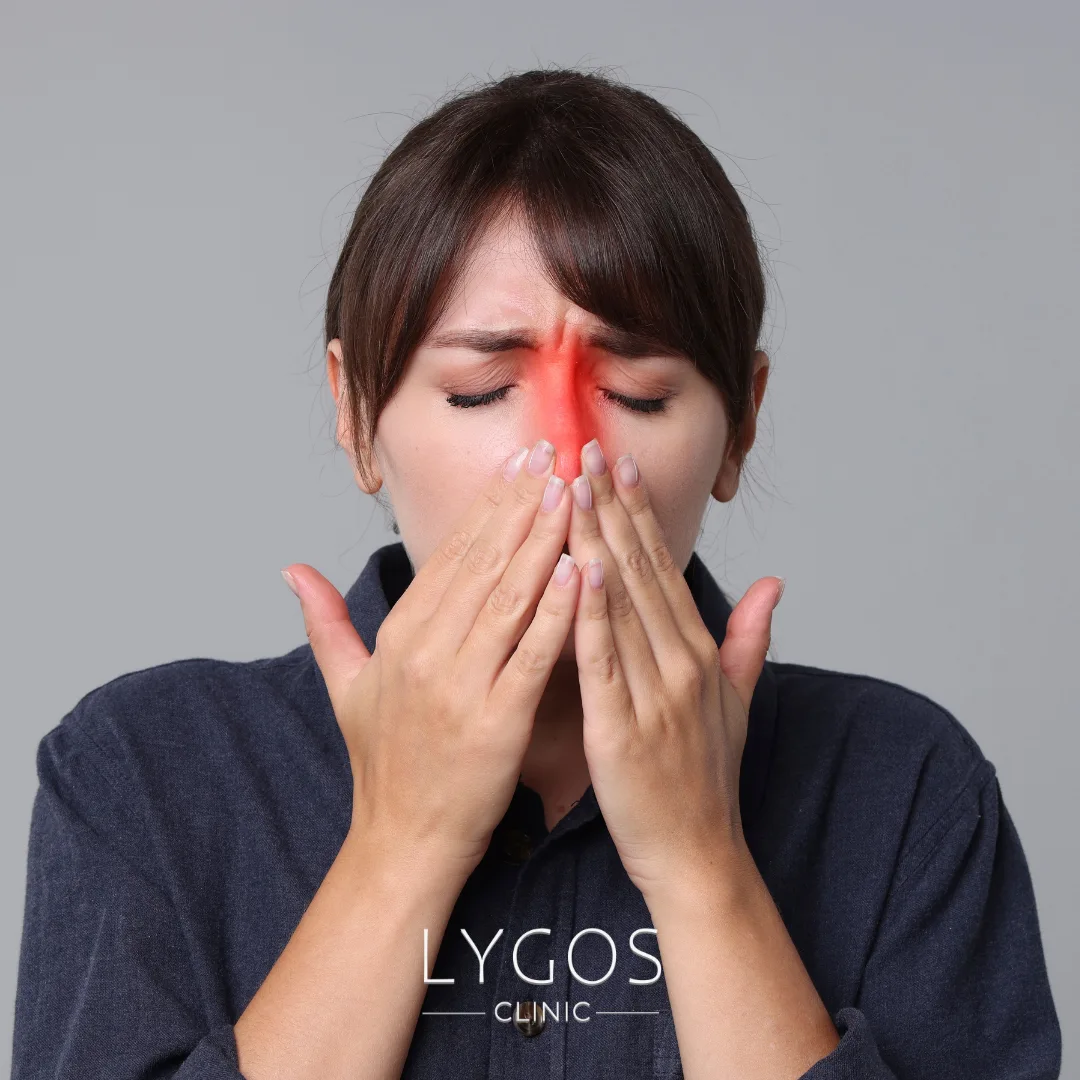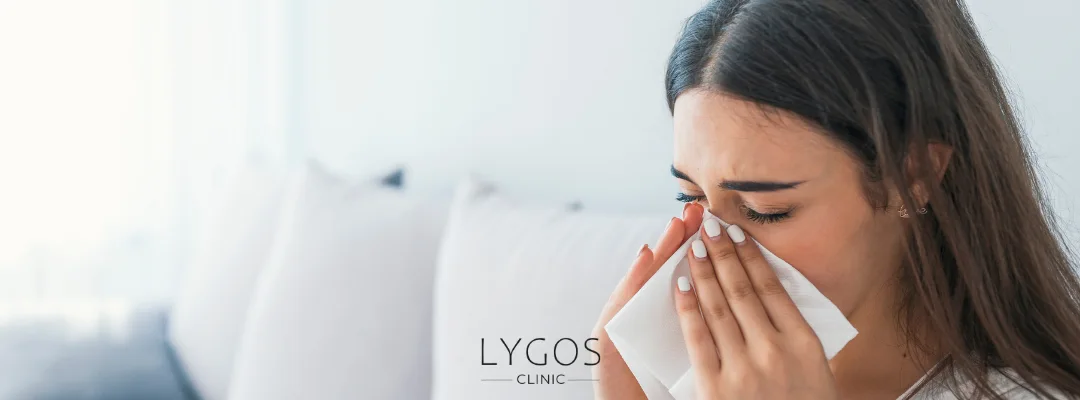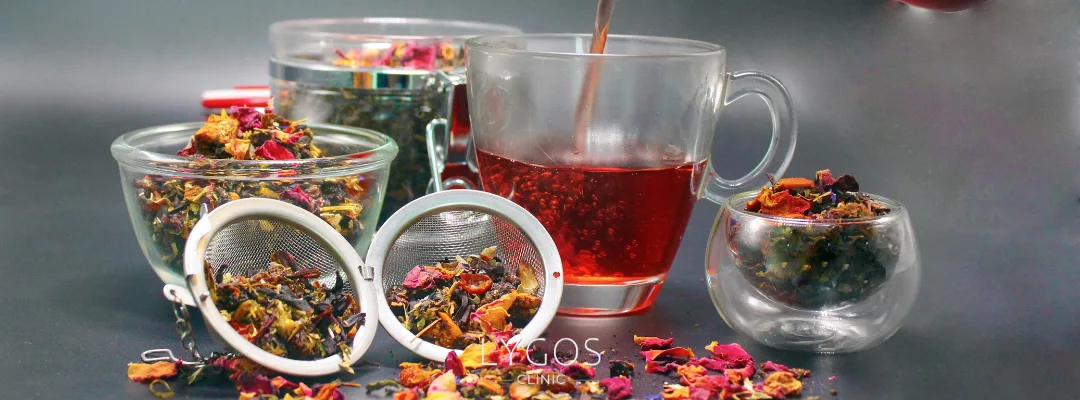How to Get Rid of Allergic Rhinitis?

Chose Your Topic
How to Get Rid of Allergic Rhinitis?
Allergic rhinitis, commonly known as “hay fever,” is a condition that can significantly affect quality of life, especially during spring. It manifests with symptoms like sneezing attacks, runny nose, itchy eyes, and difficulty breathing. It can occur seasonally or persist throughout the year. So, how to get rid of allergic rhinitis? In this article, you can find everything from understanding the condition to prevention methods.

What is Allergic Rhinitis?
Allergic rhinitis is an upper respiratory condition that occurs when the immune system overreacts to normally harmless substances like pollen, dust, mold, or animal dander. This reaction causes inflammation in the nasal mucosa. Allergic rhinitis is mainly divided into two types:
- Seasonal Allergic Rhinitis (Hay Fever): Appears during specific seasons, especially in spring and fall when pollen levels are high.
- Perennial Allergic Rhinitis : Caused by allergens that persist throughout the year, such as dust mites, mold, or pet dander.
Understanding the definition of the disease is the first step in finding an answer to the question, how to get rid of allergic rhinitis.
What Are the Symptoms of Allergic Rhinitis?
Symptoms vary from person to person, but the most common signs include:
- Frequent sneezing attacks
- Runny or blocked nose
- Red, itchy, and watery eyes
- Itchy or irritated throat
- Fatigue and difficulty concentrating
- Reduced sense of smell
These symptoms are often more intense in the morning. Severe cases can significantly disrupt daily life, which is why many people ask how to get rid of allergic rhinitis effectively.
What Causes Allergic Rhinitis?
The most common triggers of allergic rhinitis include:
- Pollen: From trees, grasses, and weeds
- Dust Mites: Microscopic creatures in bedding, quilts, pillows, and carpets
- Mold: Fungal spores that thrive in damp environments
- Animal Dander: Proteins found in cats, dogs, and other pets
- Smoke and Chemicals: Cigarette smoke, perfumes, and cleaning products
The immune system perceives these substances as threats and releases chemicals like histamine, triggering an allergic reaction. Understanding this process is important to answer how to get rid of allergic rhinitis naturally or medically.

What Helps with Allergic Rhinitis?
Treatment can involve medical and natural approaches, such as:
- Antihistamines: Reduce the effect of histamine and relieve symptoms
- Nasal Sprays: Relieve nasal congestion and reduce inflammation
- Saline Nasal Irrigation: Helps flush out allergens from the nose
- Strengthening the Immune System: Through regular sleep, balanced nutrition, and exercise
- Avoiding Allergens: Minimizing exposure at home and work
These methods may not be sufficient alone. Therefore, addressing allergic rhinitis requires both lifestyle changes and professional medical advice. Combining these approaches is key when exploring how to get rid of allergic rhinitis.

Home Remedies for Allergic Rhinitis
Some home practices can help alleviate symptoms:
- Saline Nasal Rinse: Can be done several times a day to flush allergens from the nasal mucosa.
- Using an Air Purifier: HEPA-filtered devices can remove pollen, dust, and animal dander from the air.
- Frequent Bedding Changes: Helps prevent dust mite buildup in sheets and pillowcases.
- Herbal Teas: Chamomile, mint, or ginger tea can help open nasal passages.
- Timing for Ventilation: Open windows when pollen levels are low to avoid indoor exposure.
These methods are effective for mild cases, but severe symptoms require medical consultation. If you’re wondering how to get rid of allergic rhinitis without heavy medication, these natural steps are a good start.
Prevention Methods for Allergic Rhinitis
Preventing allergic rhinitis is as important as treatment. Effective measures include:
- Tracking Pollen Levels: Follow apps or reports on pollen counts during spring
- Wearing a Mask: Particularly when pollen is high outdoors
- Keeping Windows Closed: Prevents pollen from entering the house
- Showering After Being Outside: Removes pollen from skin and hair
- Pet Care: Regular grooming and bathing of pets
Such preventive habits are essential if you want to know how to get rid of allergic rhinitis in the long term.
Allergic rhinitis is difficult to completely eliminate, but with proper treatment and preventive measures, it can be controlled. Antihistamines, nasal sprays, saline irrigation, and lifestyle adjustments can greatly reduce symptoms. Avoiding triggers like pollen, dust, and animal dander also helps prevent relapse. In practical terms, how to get rid of allergic rhinitis comes down to consistency in treatment and allergen avoidance.
In short: The answer to how to get rid of allergic rhinitis is a combination of accurate diagnosis, consistent treatment, allergen avoidance, and strengthening the immune system.
How to Get Rid of Allergic Rhinitis? Frequently Asked Questions (FAQ)
Duration depends on the trigger and treatment. Seasonal rhinitis usually lasts through pollen season, while perennial rhinitis can become chronic without treatment. With regular care and allergen avoidance, symptoms may improve within days, which is key in how to get rid of allergic rhinitis quickly.
Sneezing, runny nose, itchy eyes, and fatigue are common signs. Diagnosis is confirmed through a doctor’s examination and, if needed, allergy tests, helping determine how to get rid of allergic rhinitis with the right approach.
Yes. Avoiding pollen and dust mites, keeping a clean home, using air filters, and wearing masks can help prevent allergic rhinitis. This is part of how to get rid of allergic rhinitis and keep it from returning.
Saline nasal rinses, herbal teas (chamomile, mint), mindful ventilation, and HEPA-filtered air purifiers are effective methods for those looking into how to get rid of allergic rhinitis naturally.
Antihistamines, nasal sprays, and sometimes corticosteroid medications may be used under medical supervision. Treatment plans depend on symptom severity, which is crucial in how to get rid of allergic rhinitis effectively.



